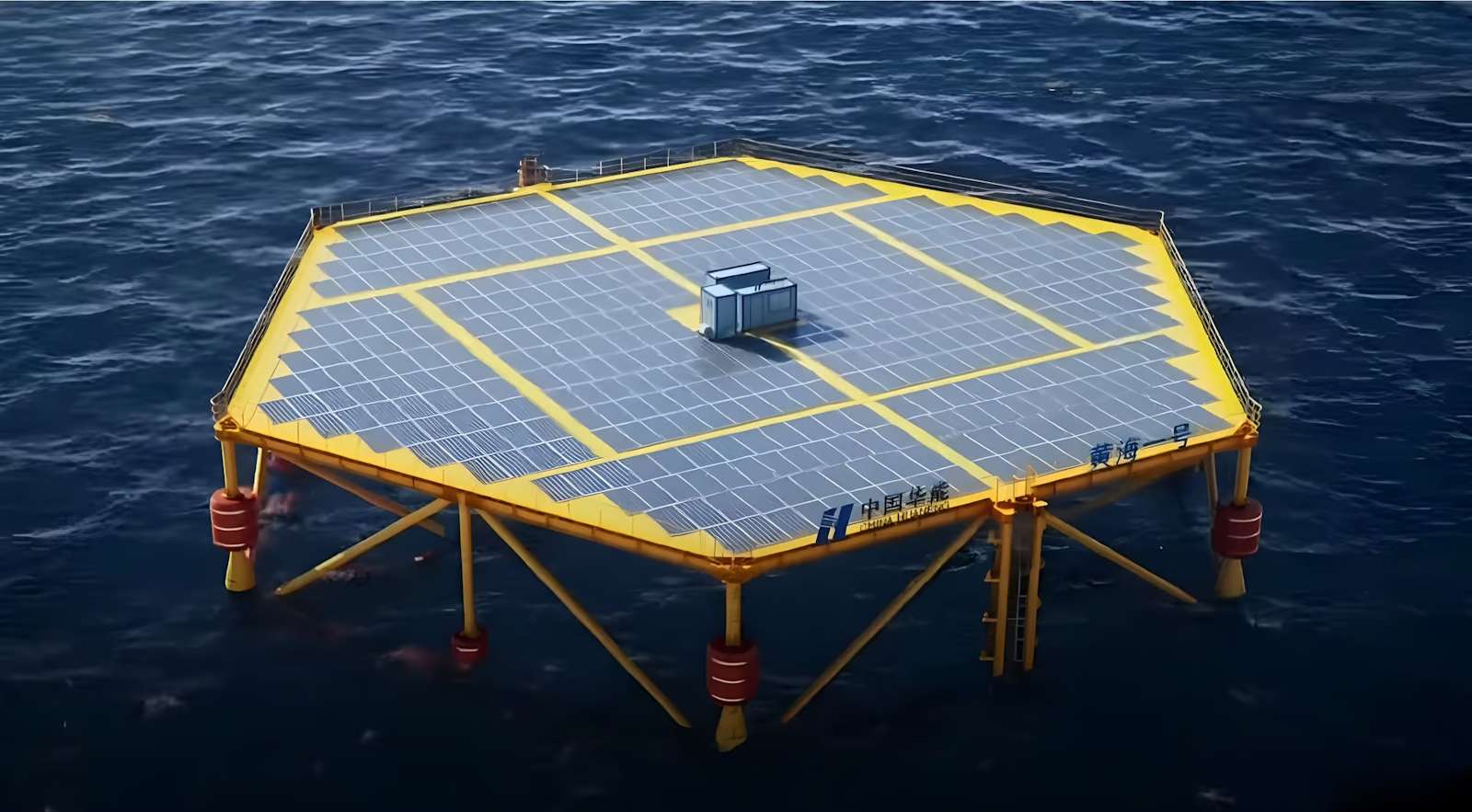China Pushes the Boundaries of Solar Energy with Giant Offshore Platforms
October 31, 2024

The Yellow Sea No. 1 platform, anchored off the Shandong Peninsula, showcases China’s commitment to expanding its renewable energy portfolio. This innovative structure stands nine meters tall and employs 64 buoys to maintain buoyancy. Its design allows it to withstand waves up to 10 meters high, demonstrating remarkable resilience in challenging maritime conditions.
The platform’s ability to adapt to harsh sea environments is crucial for its success. Engineers have incorporated three different photovoltaic technologies with varying capacities to determine the most efficient and robust configuration. This approach allows for comprehensive testing of different solar panel types in offshore conditions.
While offshore wind farms have already proven their worth in renewable energy generation, these floating solar platforms represent a new frontier. The potential synergy between wind and solar power in offshore settings could revolutionize energy production. In fact, some companies are exploring hybrid systems that combine wind and solar energy, further enhancing the efficiency of renewable power generation.
Challenges and innovations in marine solar technology
Despite its promising potential, the Yellow Sea No. 1 platform faces significant challenges. The marine environment poses unique threats to solar panel efficiency and longevity. Salt crystal deposits from sea spray can accumulate on the panels, reducing their photoelectric conversion efficiency. Additionally, seawater corrosion threatens both the photovoltaic components and electrical systems.
To combat these issues, engineers have elevated the platform above the water’s surface, minimizing direct contact with seawater. This design feature is crucial for maintaining the integrity and performance of the solar panels. The project’s success hinges on overcoming these environmental challenges while maximizing energy output.
Innovations in materials science could play a vital role in addressing these challenges. For instance, recent breakthroughs in self-healing metals might inspire similar advancements in solar panel technology, potentially enhancing their resistance to corrosion and environmental damage.
Evaluating performance and future prospects
The Yellow Sea No. 1 platform is undergoing a year-long trial period, situated approximately 30 kilometers offshore in waters 30 meters deep. This extensive testing phase will evaluate several critical factors :
- Resistance to wind and waves
- Overall structural robustness
- Electrical output efficiency
- Maintenance requirements
The results of this trial will be crucial in determining the viability of large-scale deployment of offshore solar platforms. If successful, these platforms could complement existing offshore wind farms, significantly boosting China’s renewable energy capacity.
The potential impact of this technology extends beyond energy production. As we advance in harnessing renewable energy from marine environments, we may see unexpected applications. For instance, the development of offshore energy platforms could intersect with advancements in neural interfaces and remote control technologies, potentially leading to more efficient and automated energy management systems.
To better understand the potential of offshore solar platforms, consider the following comparison table :
| Feature | Offshore Solar Platforms | Traditional Land-Based Solar Farms |
|---|---|---|
| Space Utilization | Utilizes unused sea surface | Requires large land areas |
| Environmental Impact | Minimal land use, potential marine ecosystem effects | Land use changes, habitat disruption |
| Maintenance Challenges | High due to marine environment | Moderate, easier access |
| Potential Energy Output | High, with constant exposure to sunlight | Variable, dependent on location |
As China continues to push the boundaries of renewable energy technology, projects like the Yellow Sea No. 1 platform represent a bold step towards a sustainable future. The success of these offshore solar installations could pave the way for a new era in clean energy production, harnessing the vast potential of our oceans to power our world.
Search
RECENT PRESS RELEASES
Related Post


